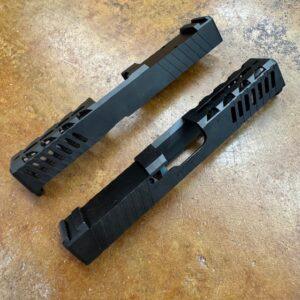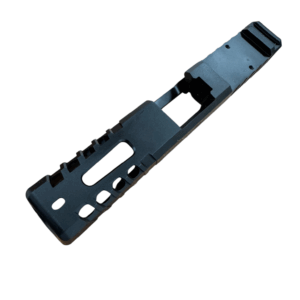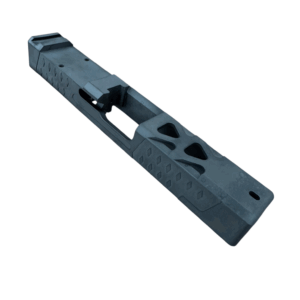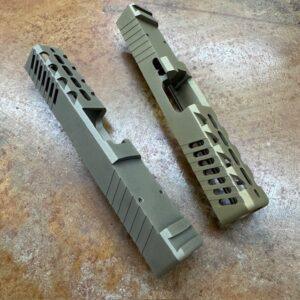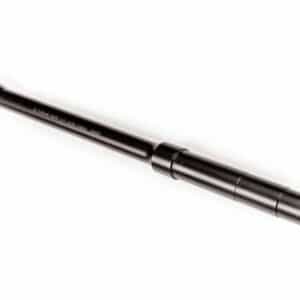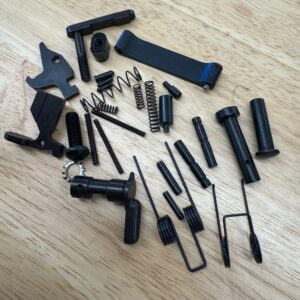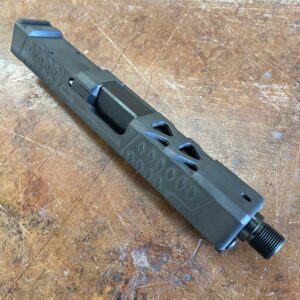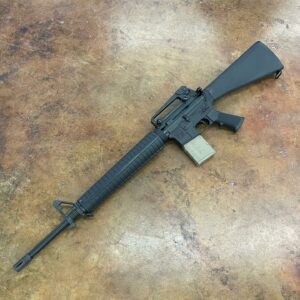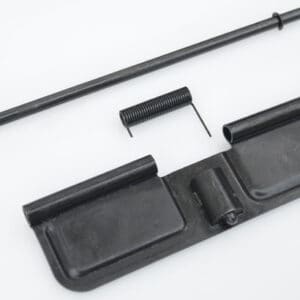A Federal Firearm License is a license that is issued by the Bureau of Firearms and Explosives. This license permits individuals and businesses to use, sell, or deal with firearms and ammunition. There are different types of FFL, each having different purposes. The license that a company that wants to sell firearms will get is totally different from that of a rifle collector.
This blog post will explain the different federal firearm license types available in detail and help you choose the type that is best for you.
What is an FFL License and Why Does it Matter
A federal firearm license is a permit given by the government to anyone involved in the firearms and ammunition industry. As long as you intend to get into the firearms industry eith as a manufacturer, importer, or seller, you have to get a license.
This license is issued by the government so as to be able to control activities that involve firearms. It is also done to make sure that these activities are carried out in a legal and responsible manner. Without getting the appropriate federal firearm license, engaging in activities that include firearms and ammunition can lead to severe legal consequences.
How Many FFL License Types Are There
There are nine types of Federal Firearm Licenses, numbered 01 to 11. Although the numbering gets to 11, some numbers were not used.
Each type of license is given for specific purposes, and they can be seen below:
| FFL License Type | Official Name | Activities |
| 01 | Dealers in Firearms Other Than Destructive Devices | Retail sales, gunsmithing |
| 02 | Pawnbroker in Firearms Other Than Destructive Devices | Pawnbroking that involves firearms |
| 03 | Collector of Curio and Relic Firearm | Permits activities that involve collecting antique firearms |
| 06 | Manufacturers of Ammunition for Firearms | Allows the production of ammunition that does not include destructive devices |
| 07 | Manufacturers of Firearms Other Than Destructive Devices | Allows the manufacturing of firearms and ammunition |
| 08 | Importer of Firearms and Ammunition | This license allows its holder to import firearms and ammunition |
| 09 | Dealer in Destructive Devices | It allows for dealings that involve destructive devices |
| 10 | Manufacturer of Destructive Devices and AP Ammo | It allows the manufacturing of destructive devices and armor-piercing ammo |
| 11 | Importer of Destructive Devices and AP Ammo | Allows importing of destructive devices and |
Categories of FFL Types
To make it easier to understand, the different types of Federal Firearms Licenses can be further categorized into
| Category | FFL Types | Description |
| Dealers | 01, 02, 09 | Can engage in the selling or pawnbroking of firearms |
| Manufacturers | 06, 07, 10 | Can produce or manufacture firearms, ammunition, or destructive |
| Importers | 08, 11 | Can import firearms, ammunition, or destructive devices |
| Collectors | 03 | Can collect curio and relic firearms for personal use |
Understanding FFL with SOT
SOT is short for Special Occupational Taxpayers and it can be used to enhance some FFL types, allowing its holders to deal with items that are categorised under the National Firearms Act.
The SOT is in three classes, which are:
- Class 1: NFA firearm importers
- Class 2: NFA firearm manufacturers
- Class 3: NFA firearm dealers
It is important for businesses that intend to operate in markets that are regulated by the NFA to get a federal license with the appropriate SOT class.
Detailed Breakdown of Federal Firearms License Types
Type 01 – Firearms Dealer (Non-Destructive Devices)
This type of federal firearm license is ideal for gun retailers as it allows the sales and repair of only firearm items like AR-10 or AR-15 without including destructive devices.
Type 02 – Pawnbroker in Firearms
This license type is similar to Type 01, but it permits the holders to accept firearms as collateral for loans.
Type 03 – Collector of Curio and Relic Firearms
This type of license is issued to those people who love to collect antique firearms for personal purposes. It does not allow any business activity.
Type 06 – Manufacturer of Ammunition
This type of firearm federal license allows the production of ammunitions, but not destructive devices or armor-piercing rounds.
Type 07 – Manufacturer of Firearms (Non-Destructive Devices)
This permits its holders to manufacture and sell firearms, excluding destructive devices. The Type 07 is often paired with the SOT Class 2 so holders can also deal with NFA items.
Type 08 – Importer of Firearms and Ammunition
It allows the importation of firearms and ammunition, but it excludes dealing with destructive devices.
Type 09 – Dealer in Destructive Devices
This type allows the sales of all firearms, including destructive devices, at both the wholesale and retail levels.
Type 10—Manufacturer of Destructive Devices and AP Ammo
This license type permits the holders to manufacture both destructive devices and armor-piercing ammunition.
Type 11 – Importer of Destructive Devices and AP Ammo
This allows importing destructive devices and armor-piercing ammunition.
Which FFL License Should You Choose?
For every activity in the firearm industry, there is a license that should be obtained. Here is something to help you when choosing.
- Retail Shop: Type 01
- Pawnbroker: Type 02
- Collector: Type 03
- Ammunition Manufacturer: Type 06
- Firearms Manufacturer: Type 07
- Importer: Type 08
- Dealer in Destructive Devices: Type 09
- Manufacturer of Destructive Devices: Type 10
- Importer of Destructive Devices: Type 11
How to Get an FFL License
Here are a few tips on how to get an FFL firearms license
- Eligibility: To apply for an FFL, you have to be 21 years old or above. This is the age when most states allow people to deal with firearms.
- Complete ATF Form 7: The ATF Form is the application form that you have to fill to apply for the Federal Firearms License. Make sure to fill in your details accurately.
- Submit Application and Fee: After filling out this form, submit it and pay the licensing fee. Note that these fees vary by license type.
- Background Check: This step is conducted by the ATF to ensure that all details are accurate.
- Interview: An Industry Operations Investigator (IOI) will review your application and premises.
- Approval: If your application is approved, you’ll receive your license within 60 days.
Responsibilities of FFL Holders
- Maintain an accurate record of all the firearm transactions you carry out
- Conduct National Instant Criminal Background Check System (NICS) checks.
- Adhere to all federal, state, and local laws that concern firearms and their usage
- Undergo periodic ATF inspections.
- Renew the licenses every three years.
Number of FFL Licenses by Type
As of the 2022 fiscal year, the ATF recorded the number of license that has been issued based on the types.
| FFL Type | Description | Number of Active Licenses |
| 01 | Dealer in Firearms (Other Than Destructive Devices) | 52,910 |
| 02 | Pawnbroker in Firearms (Other Than Destructive Devices) | 6,740 |
| 03 | Collector of Curio and Relic Firearms | 52,814 |
| 06 | Manufacturer of Ammunition for Firearms | 2,212 |
| 07 | Manufacturer of Firearms (Other Than Destructive Devices) | 19,059 |
| 08 | Importer of Firearms and Ammunition | 1,886 |
| 09 | Dealer in Destructive Devices | 154 |
| 10 | Manufacturer of Destructive Devices and AP Ammo | 482 |
| 11 | Importer of Destructive Devices and AP Ammo | 306 |
From the data above, it is quite evident that the most common types of FFL are the Type 01 and Type 03 as they have over 50,000 obtained licenses.
Number of FFL Licenses by State
Below is a table showing the number of firearm licenses issued in each state of the USA.
| Rank | State | Total Number of FFLs Issued |
| 1 | Texas | 10,945 |
| 2 | Florida | 6,792 |
| 3 | Pennsylvania | 5,874 |
| 4 | Ohio | 5,201 |
| 5 | North Carolina | 5,099 |
| 6 | Georgia | 5,025 |
| 7 | California | 4,987 |
| 8 | Michigan | 4,844 |
| 9 | Arizona | 4,563 |
| 10 | Missouri | 4,502 |
Number of Each FFL License Type by State
The table below gives a detailed breakdown of the number of licenses issued in each state.
| State | Type 01 | Type 02 | Type 03 | Type 06 | Type 07 | Type 08 | Type 09 | Type 10 | Type 11 |
| Alabama | 1,200 | 80 | 800 | 50 | 150 | 20 | 5 | 3 | 2 |
| Alaska | 300 | 20 | 200 | 10 | 50 | 5 | 2 | 1 | 1 |
| Arizona | 1,950 | 140 | 1,400 | 40 | 700 | 35 | 14 | 17 | 5 |
| Arkansas | 1,100 | 70 | 700 | 30 | 120 | 15 | 4 | 2 | 1 |
| California | 2,400 | 180 | 1,600 | 50 | 500 | 60 | 18 | 20 | 7 |
| Colorado | 1,300 | 90 | 900 | 35 | 200 | 25 | 6 | 3 | 2 |
| Connecticut | 600 | 40 | 400 | 20 | 80 | 10 | 3 | 1 | 1 |
| Delaware | 200 | 15 | 150 | 10 | 30 | 5 | 1 | 1 | 0 |
| Florida | 3,200 | 320 | 2,890 | 75 | 900 | 65 | 15 | 18 | 6 |
| Georgia | 2,100 | 150 | 1,500 | 60 | 300 | 30 | 8 | 4 | 3 |
| Hawaii | 100 | 10 | 80 | 5 | 20 | 2 | 1 | 0 | 0 |
| Idaho | 700 | 50 | 500 | 25 | 100 | 10 | 3 | 2 | 1 |
| Illinois | 1,500 | 100 | 1,000 | 40 | 250 | 20 | 6 | 3 | 2 |
| Indiana | 1,400 | 90 | 900 | 35 | 200 | 15 | 5 | 2 | 1 |
| Iowa | 800 | 60 | 600 | 30 | 100 | 10 | 3 | 1 | 1 |
| Kansas | 900 | 70 | 650 | 25 | 120 | 15 | 4 | 2 | 1 |
| Kentucky | 1,100 | 80 | 800 | 35 | 150 | 20 | 5 | 3 | 2 |
| Louisiana | 1,000 | 70 | 700 | 30 | 130 | 15 | 4 | 2 | 1 |
| Maine | 400 | 30 | 300 | 15 | 70 | 5 | 2 | 1 | 1 |
| Maryland | 700 | 50 | 500 | 25 | 100 | 10 | 3 | 1 | 1 |
| Massachusetts | 600 | 40 | 400 | 20 | 90 | 10 | 3 | 1 | 1 |
| Michigan | 1,800 | 120 | 1,200 | 50 | 300 | 25 | 7 | 4 | 3 |
| Minnesota | 1,000 | 70 | 700 | 30 | 150 | 15 | 4 | 2 | 1 |
| Mississippi | 900 | 60 | 600 | 25 | 110 | 10 | 3 | 1 | 1 |
| Missouri | 1,600 | 110 | 1,100 | 45 | 250 | 20 | 6 | 3 | 2 |
| Montana | 500 | 40 | 400 | 20 | 90 | 10 | 3 | 2 | 1 |
| Nebraska | 600 | 50 | 450 | 20 | 80 | 10 | 3 | 1 | 1 |
| Nevada | 800 | 60 | 600 | 25 | 150 | 15 | 4 | 2 | 1 |
| New Hampshire | 400 | 30 | 300 | 15 | 70 | 5 | 2 | 1 | 1 |
| New Jersey | 500 | 40 | 350 | 20 | 80 | 10 | 3 | 1 | 1 |
| New Mexico | 700 | 50 | 500 | 25 | 100 | 10 | 3 | 2 | 1 |
| New York | 1,500 | 100 | 1,000 | 40 |
Final Thoughts
One important thing to do if you want to deal with firearms is to understand the different FFL license types available. The federal license is not just one document that fits the purpose of everyone, there are different types for different purposes. Therefore, it is important to choose the right one that suits your intended use and know how to get FFL license.
If you are about to get an FFL license, then you should know that it is not just a piece of paper as it comes with responsibilities. You need to understand the types of federal firearm license available and make sure to comply with the rules and regulations that come with it. Going against the rules of the AFL can result in serious consequences, so make sure to do everything you can to avoid going against those rules.
FAQs
How much does it cost to get an FFL license?
Prices of these licenses differ depending on the FFL type. Here are a few common types with their prices:
- Type 01 (Dealer in Firearms): $200 for the first 3 years, then $90 to renew.
- Type 03 (Collector of Curio and Relics): $30 for 3 years.
- Type 07 (Manufacturer of Firearms): $150 for 3 years.
Note that you will be required to pay additional fees if you intend to acquire SOT, which makes you deal with NFA items.
Which FFL type is the most commonly used?
According to the data obtained from the ATF, Type 01 is the most common type. This license is used by those who wants to sell firearms without dealing with destructive devices and NFA items.
Do I need an FFL to carry a concealed firearm legally?
No! Concealed firearms are regulated at the state level, and a separate permit is given to allow you carry concealed firearms legally.
What are the consequences of breaking federal firearm regulations?
Going against the federal firearm regulations can lead to severe consequences. These may include paying fines, revoking your license, and legal consequences like prison time. ATF takes a very strong stance on compliance. This is why you need to fully understand FFL meaning, your duties as a license holder, and the rules of ATF, and comply with those rules.



